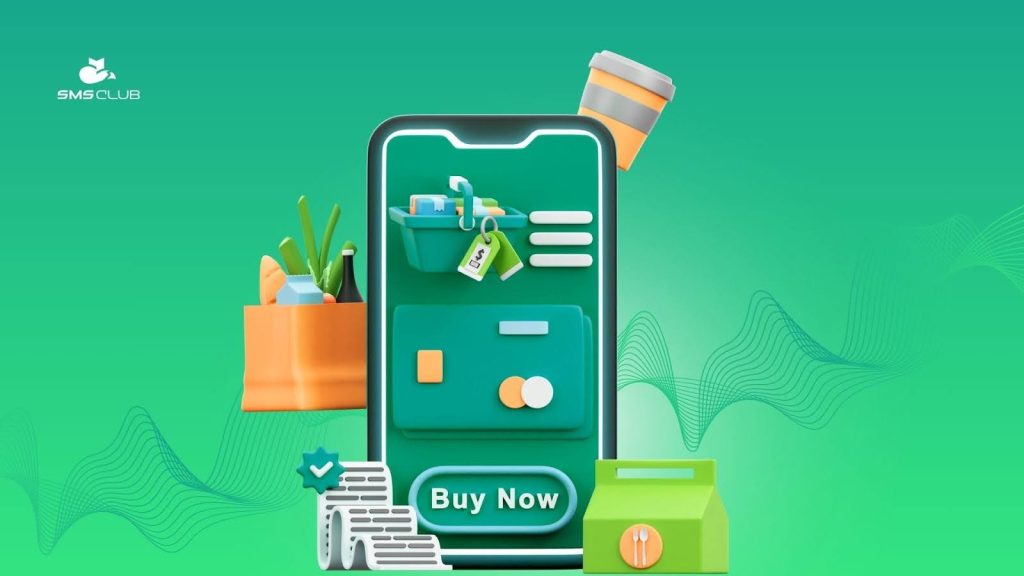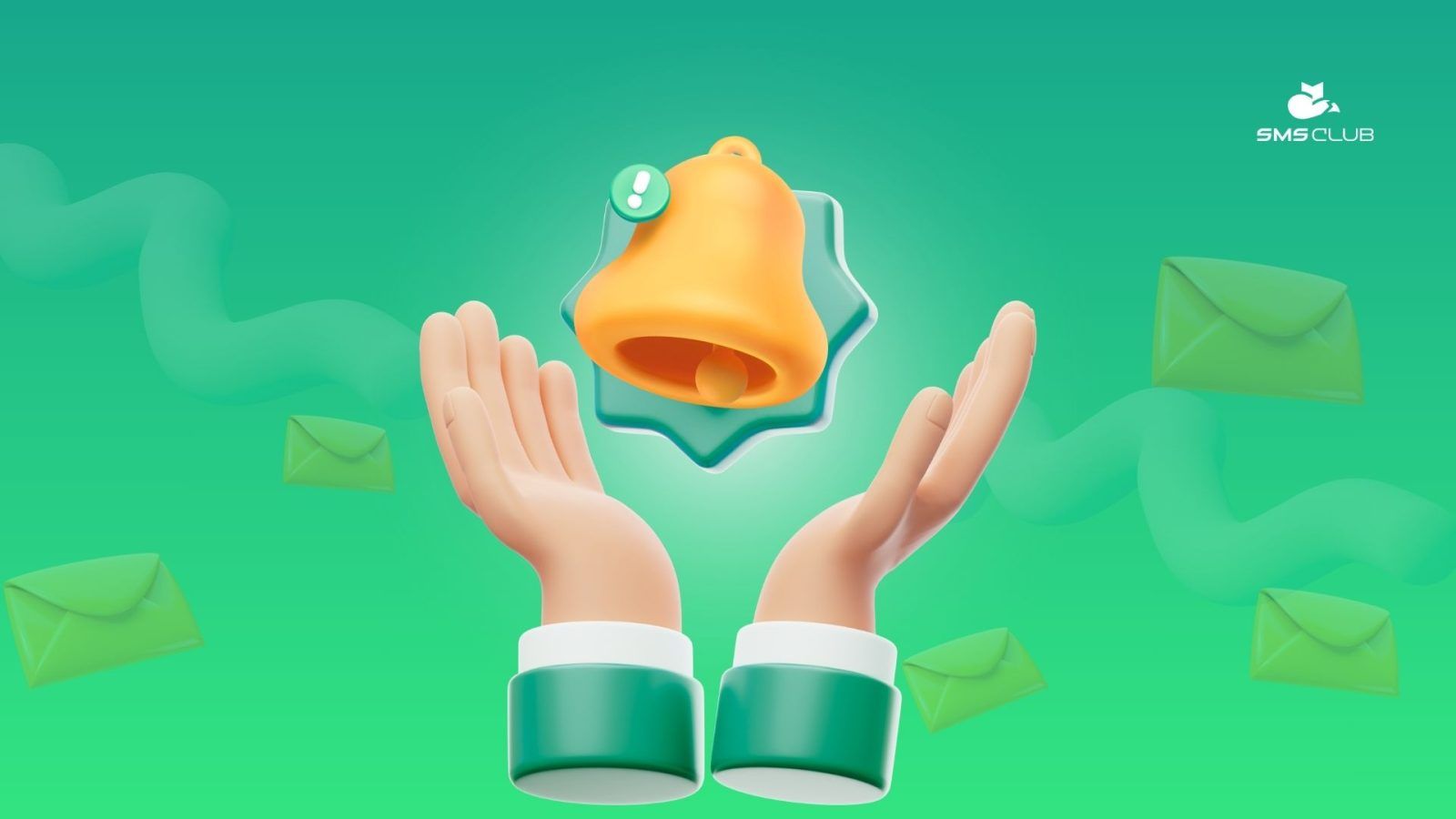The store is texting you: SMS marketing for e-commerce

Contents:
Contents:
More than 25% of Ukrainians prefer online shopping, and another 40% combine online and offline shopping. According to experts’ forecasts, the share of e-commerce — sales and purchases exclusively online — will grow every year.
Among the risks for businesses focused on e-commerce is getting lost in the information overload: attracting customers’ attention is difficult, and keeping it is even harder. SMS marketing for e-commerce is a strategy that contributes to positive growth. How this tool complements other promotion methods is discussed below.
When do stores need SMS?
There are two situations when a store should use bulk SMS:
- The need to increase sales by activating regular customers. Searching for new clients through messages is certainly not a good idea.
- The need to optimize communication with the customer at every stage of the purchase. Notifications about the shipment of goods or the receipt of payment are a modern standard of quality service.
In the first case, SMS marketing for the store focuses on mass notifications. Individual accents can be added if the database is well-segmented. In the second case, it is exclusively personalized.
Both strategies are united by the fact that messages are initially aimed at a loyal audience — people who already know your brand, and losing contact with them is not an option.

Mass advertising messages from stores
This involves general promotions, discounts, and sales. It also includes significant events such as raffles or the launch of new product lines — anything that might interest most of your customers.
Advantages of campaigns:
- The recipient will at least visit your website or page for more details if the offer is relevant. There’s three times more chance they’ll read the message than if you sent the same information via email.
- SMS doesn’t disappear or get lost. This avoids the typical situation where a subscriber sees a reel with a “cool discount” and forgets about it in half a minute due to similar content overload. The same goes for push notifications.
- A text message on the phone is sure to be noticed and read — over 90% of recipients open the message within the first three minutes after receiving it.
- It saves both your time and the customer’s. How long has it been since you checked your email inbox for promotional messages? Evaluating not as a businessperson but as a potential buyer? How often do you check store SMS notifications?
Example 1:
A shop offers long-lasting products (tea, coffee, cheese, sausages, spices, etc.) and related items. Promotional campaigns are mostly tied to holidays when people buy something delicious and unusual for themselves or as gifts. They also use unconventional occasions, like “Tomato Day” and “Cinnamon’s Birthday.”
SMS examples:
- “Easter sale: discounts on 500 items from different categories. Valid until the end of the month. Order here”;
- “Coffee week! 25% off selected items. The world is on your shelf. Details on the website”;
- “Back to school! Special prices on lunch boxes for students. Various sizes and colors — choose here.”
Personalized advertising messages from stores
This type of internet store sendings should be based on customer behavior analysis and further segmentation of the database.
SMS is also the most convenient format for informing about individual discounts, accumulated points, bonuses, or special offers. The same goes for coupon expiration reminders.

Example 2:
The same store with long-lasting products. Database analysis shows that three groups of customers stand out.
- People who buy mid-priced olive oil every three months. They are sure to pay attention to an offer with this product. Other products can be included, such as those without sugar or that are considered healthy.
SMS examples:
“+20 varieties of olive oil, find your aroma! Your accumulated discount — $300.”
“We offer a 15% discount on 25 healthy food products, details on the website.”
- People who buy various spices and sauces several times a year. They can be offered complementary products, such as storage systems as a gift, as well as products with unusual flavors, like “seaweed jam.”
SMS example:
“Spice storage set for 12 containers. Chinese five-spice blend as a gift. Offer valid until the end of October.”
- People who buy coffee, tea, and sweets in pretty boxes every one or two months — likely for gifts to friends.
SMS examples:
“Discover new flavors of real tea! Oolong collection available in gift packaging.”
“Christmas is near! Your personalized discount on dried fruits and treats — 20%.”

Don’t forget to greet customers on their birthday. In this case, the SMS might look like this:
“Anna, get an additional 18% birthday discount on your favorite products with promo code: EXCLUSIVE18.”
Service messages from stores
These messages are also called transactional. They facilitate interaction between the buyer and the store, and significantly simplify it. Businesses that have set up service message sending are seen as customer-oriented.

Example 3:
Here, it’s about order confirmation, informing about the delivery status — especially if the item is coming from abroad or made to order — receipt of payment, etc. These things build trust and leave a pleasant impression of interacting with the store.
SMS examples:
“Your order 12345 is already at customs, expect delivery by October 1.”
“Your order 12345 is on its way! Thank you for your purchase.”
Conclusions
There is no single recipe for SMS e-commerce that fits all products, stores, and business niches. Therefore, it’s important to test different message options to find the one your audience responds to best.
A formal message style is always a safe bet, but texts with humor can help attract attention. For example: “If your fridge could talk, what would it say about your menu?”
However, test unconventional steps for your business cautiously. With an SMS service, you can send free test messages. To use this opportunity optimally, it’s best to consult professionals.




